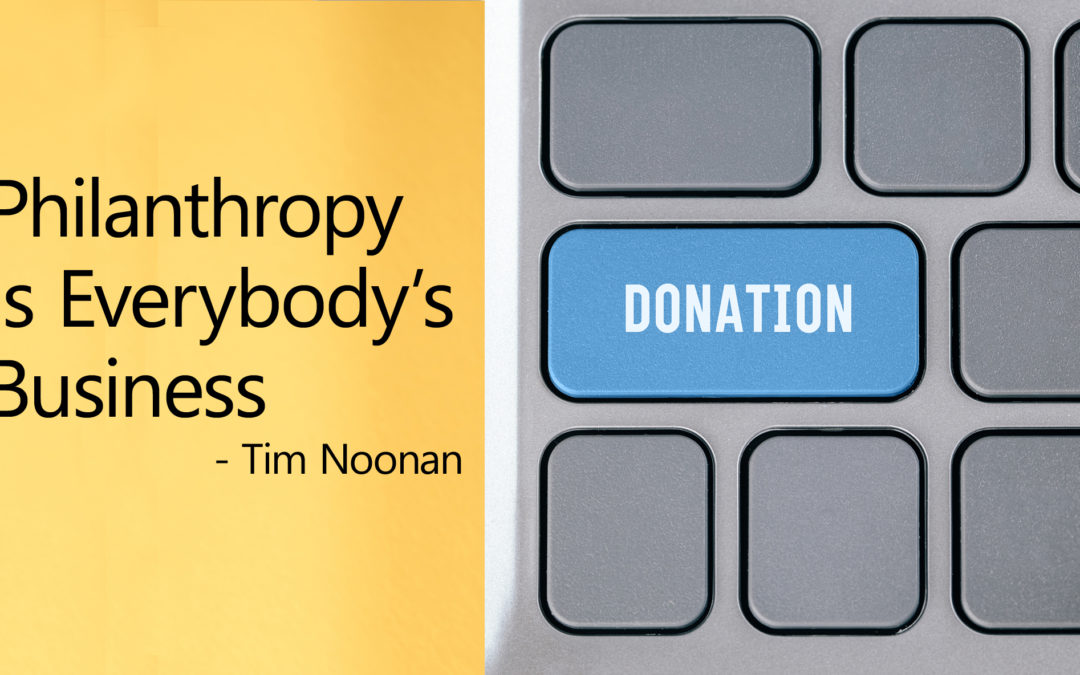Corporate Leadership is Driving a New Level of Community Involvement
Christmas decorations cheering up retail outlets, supermarkets and business offices aren’t the only signs that the year is winding down. Gentle nudges from non-profits to make our 2021 tax-deductible donations are another indicator.
Good cheer and charity, of course, aren’t restricted to December. And in the case of latter, an increasing number of corporate executives are making giving back to their community an integrated, year-round part of their company’s business model.
More and more executives are committing to robust philanthropic programs. They are directing their companies to contribute to local communities beyond just providing secure employment for members of their community, paying their share of taxes, and generating profits through the creation of goods and services.
Of course, as 2021 winds to a close, the urgency to do more is undeniable. Coming off nearly two years in which hundreds of thousands of Americans lost their lives, the need to support healthcare providers and research institutions is staggering. But the pandemic also put many non-profit institutions on life support – or put them out of business. Arts and cultural organizations that closed their doors for quarantine never reopened them. Many educational, religious or other vital non-profits have been similarly threatened.
Beyond the impact of the pandemic on non-profits, underscoring the importance of corporate philanthropy, the time has come for corporate executives to begin retooling their organizational mission to include activistic philanthropy.
It is not a new idea. In 2007, Salesforce founder Marc Benioff and co-author Caryle Adler published The Business of Changing the World, Twenty Great Leaders on Strategic Corporate Philanthropy. Among those who contributed were Dell’s Michael S. Dell and Kevin B. Rollins, writing on “The Return of Leading Responsibly,” Laura Scher of Working Assets on “Consumerism with a Conscience,” and AOL cofounder Steve Case on “A Hybrid Approach to Business and Philanthropy.”
Case, especially, really nailed it.
“Too many people,” his article began, “act as if the private sector and the social sector should operate on different axes, with one all about maximizing profits and the other all about maximizing social impact. A better approach is to integrate these missions.”
There are many ways that philanthropy can energize rather than obligate a workforce. They range from corporate sponsorship programs to the increasing use of Volunteer Time Off (VOT) in benefits packages. VOT adds days out of the office, at full compensation, if the employee uses that time to help some local organization. It is a win-win-win: for the employee and the charity as well the company.
In 2019 the Young Professionals Organization took interest in this issue and sent a Global Leadership Survey to 27,000 chief executive members in 130 countries.
Ninety-three percent of the 2,200 respondents affirmed that business should have “a positive impact on society beyond pursuing profits and wealth.” This represents “a departure for most of these CEOs from previously held views.” Seventy-five percent acknowledged their perspective and engagement in advancing the broadening of their corporate mission to serve business and society, “has changed over the past five years.”
In his Introduction to The Business of Changing the World, Benioff recalls how, as an Oracle executive in 1997, he was tapped by CEO Larry Ellison to help start the company’s first major philanthropic initiative. Ellison had been inspired by Colin Powell’s announcement of the launch of America’s Promise program, which in part challenged Americans to make a greater commitment to our youth.
Oracle’s response was to launch a program to get computers into underserved schools, and Benioff would spend “half of my time in management meetings and the other half at schools in south-central Los Angeles, Washington, DC, Northern Ireland, and Israel.”
The company placed thousands of computers in hundreds of schools worldwide, catching Oprah Winfrey’s attention and earning Larry a shout out on her program.
And yet, Benioff writes, “Our small team felt as if the effort fell short of leveraging Oracle’s full philanthropic potential.”
It’s a story that both inspires and cautions us: Be prepared. There is a great deal to be done, and it may seem overwhelming. But those are all opportunities to be rewarded in ways that may help a life, probably last a lifetime, and certainly be enriching.
